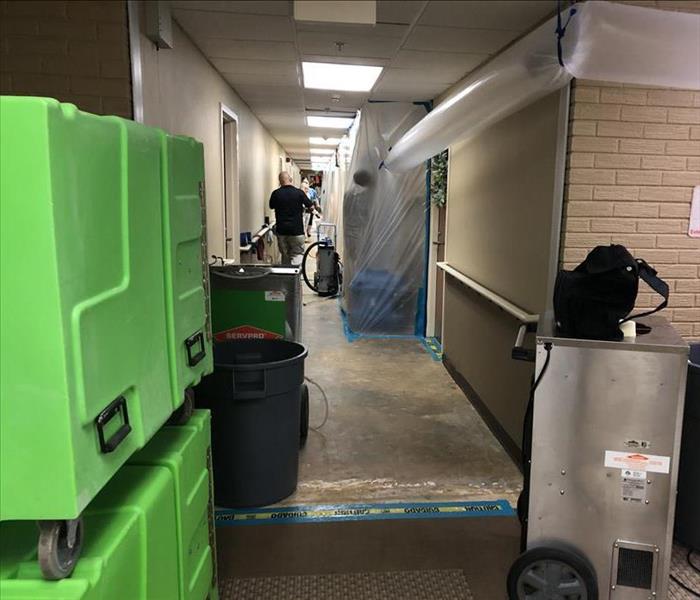The ABCs of Water Damage Restoration: Understanding the Different Types of Water Damage and their Restoration Processes
2/20/2023 (Permalink)
 SERVPRO water damage restoration team at work in the hallway of a commercial restoration project in Nashville, TN
SERVPRO water damage restoration team at work in the hallway of a commercial restoration project in Nashville, TN
Water damage can be devastating to a property, regardless of the source. Whether it's a flood, a burst pipe, or a leaky roof, water can cause significant damage to your home or business, leading to costly repairs and potential health risks. Understanding the different types of water damage and their restoration processes can help you better prepare for and respond to water damage events.
In this blog post, we'll break down the three categories of water damage and the restoration processes associated with each.
Category 1 Water Damage: Clean Water
Category 1 water damage is the least severe and easiest to clean up. It refers to water that is clean and free from contaminants, such as water from a burst pipe or rainwater.
Restoration Process: The restoration process for Category 1 water damage typically involves the following steps:
- Water Extraction: The first step in any water damage restoration process is to remove the water. This involves using specialized equipment to extract water from the affected areas.
- Drying: Once the water has been extracted, the drying process begins. This involves using dehumidifiers and air movers to dry out the affected areas and prevent the growth of mold.
- Cleaning: After the area has been dried, cleaning and disinfecting the affected surfaces is necessary to prevent the growth of bacteria and other harmful organisms.
Category 2 Water Damage: Gray Water
Category 2 water damage is more severe than Category 1 and requires more extensive restoration efforts. Gray water is water that contains some level of contaminants, such as water from a dishwasher or washing machine.
Restoration Process: The restoration process for Category 2 water damage is more complex than Category 1, involving the following steps:
- Water Extraction: The first step in the restoration process is to extract the water from the affected areas, using specialized equipment.
- Drying: After the water has been removed, the drying process begins. This step may take longer than in Category 1 water damage, as the water may have seeped into porous materials, such as carpets and upholstery.
- Sanitizing: The next step is to sanitize the affected areas to eliminate bacteria and prevent mold growth. This may involve using specialized products to clean and disinfect surfaces.
- Restoration: The final step in the restoration process is to repair or replace any damaged materials or structures, such as flooring or drywall.
Category 3 Water Damage: Black Water
Category 3 water damage is the most severe and dangerous type of water damage. It involves water that is highly contaminated, such as sewage or floodwater. This type of water damage poses a significant health risk and requires immediate and extensive restoration efforts.
Restoration Process: The restoration process for Category 3 water damage is the most complex and may involve the following steps:
- Water Extraction: The first step in the restoration process is to extract the water from the affected areas, using specialized equipment.
- Disinfecting: After the water has been removed, the area must be disinfected to eliminate harmful bacteria and other organisms.
- Decontamination: If the water has come into contact with porous materials, such as carpeting or drywall, these materials must be removed and replaced to prevent the growth of mold and bacteria.
- Restoration: The final step in the restoration process is to repair or replace any damaged materials or structures, such as flooring or drywall.
Water damage can be a costly and dangerous problem for any property owner. It's important to understand the different types of water damage and the restoration processes involved in each category. Category 1 water damage is the least severe and easiest to clean up, while Category 2 and 3 require more extensive restoration efforts.
No matter the category of water damage, it's crucial to seek professional help from a reputable water damage restoration company, like SERVPRO of Southeast Nashville, to ensure that the restoration process is done efficiently and effectively. Our team of experts is well-equipped to handle any water damage situation, providing 24/7 emergency services and state-of-the-art restoration techniques. Don't hesitate to reach out if you're in need of water damage restoration services.




 24/7 Emergency Service
24/7 Emergency Service